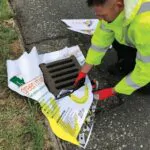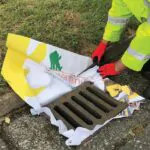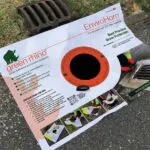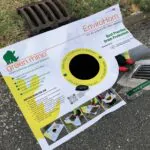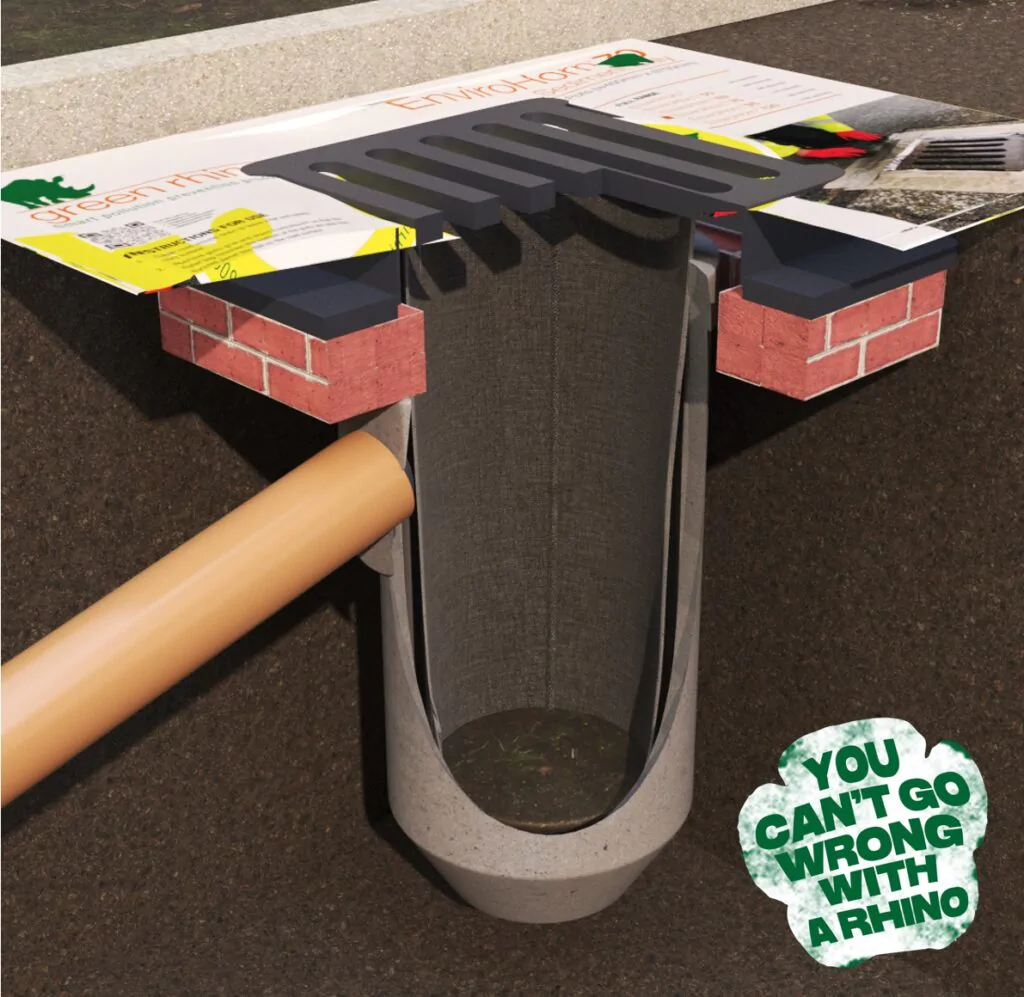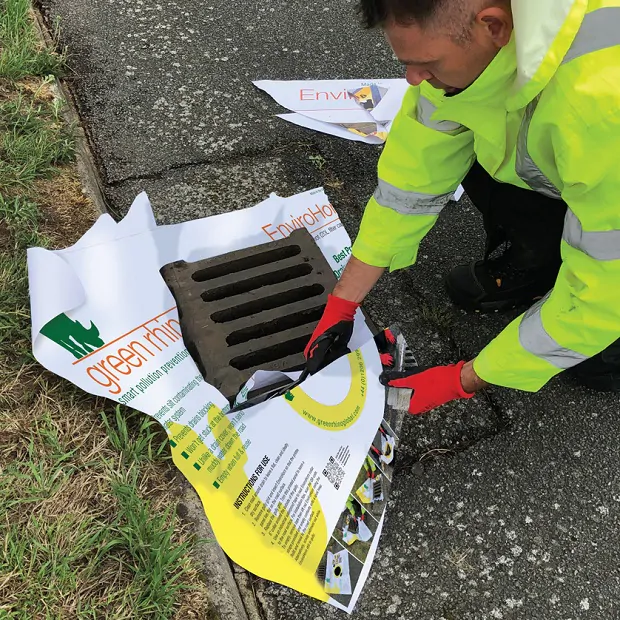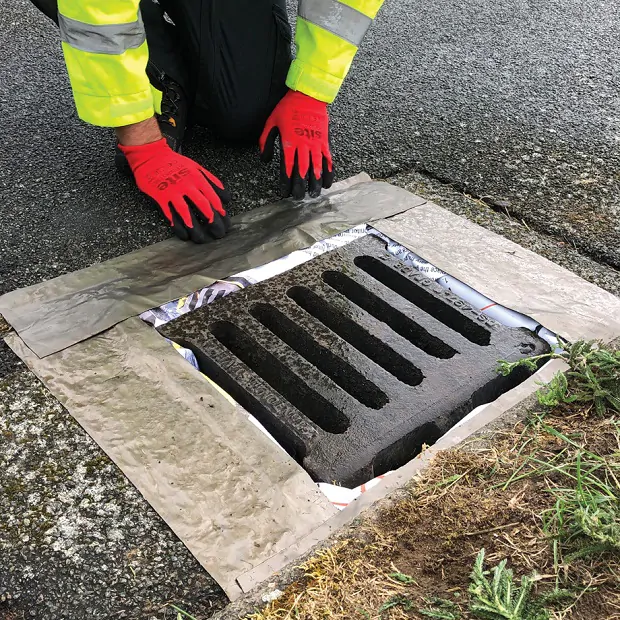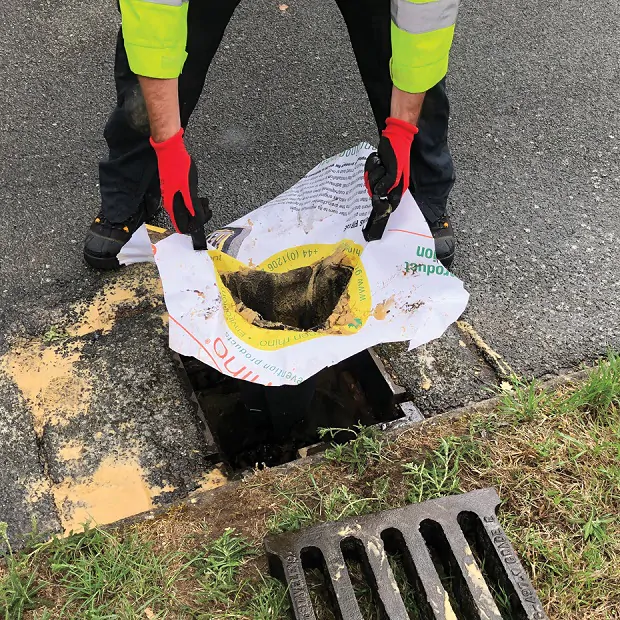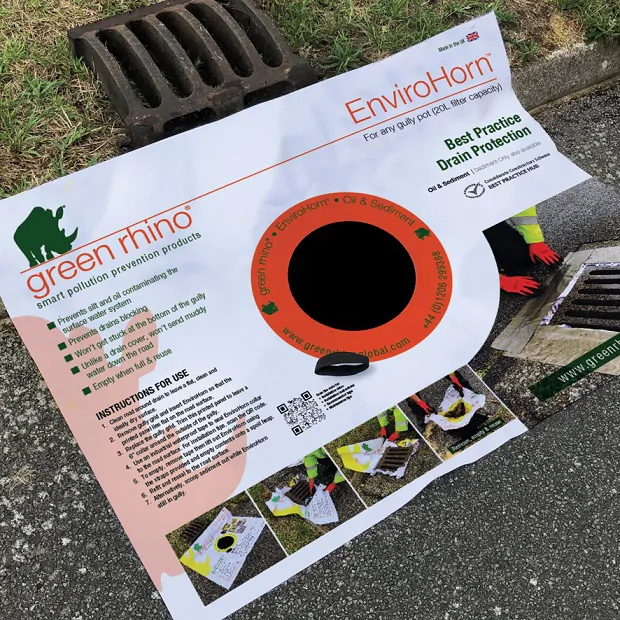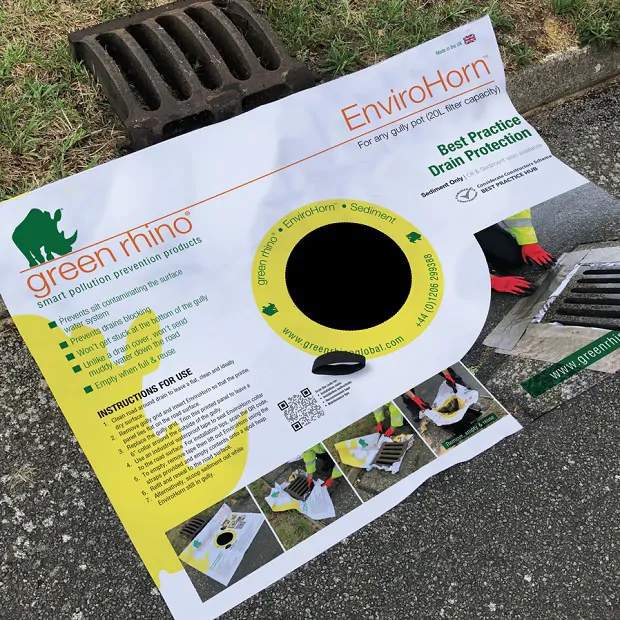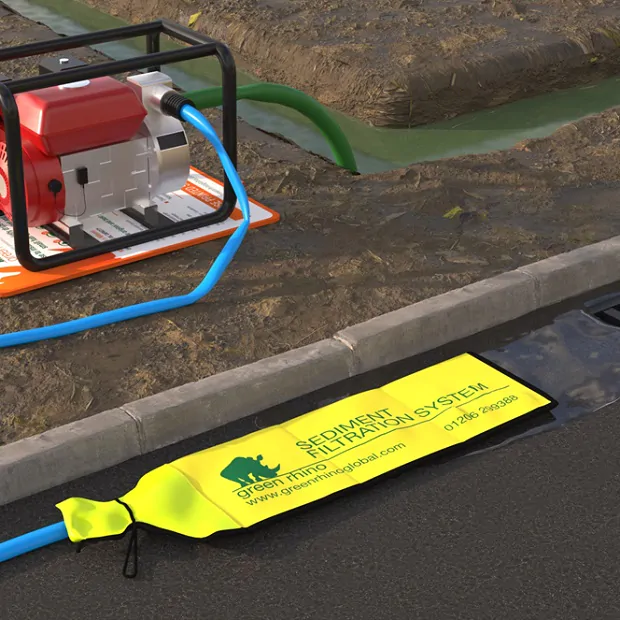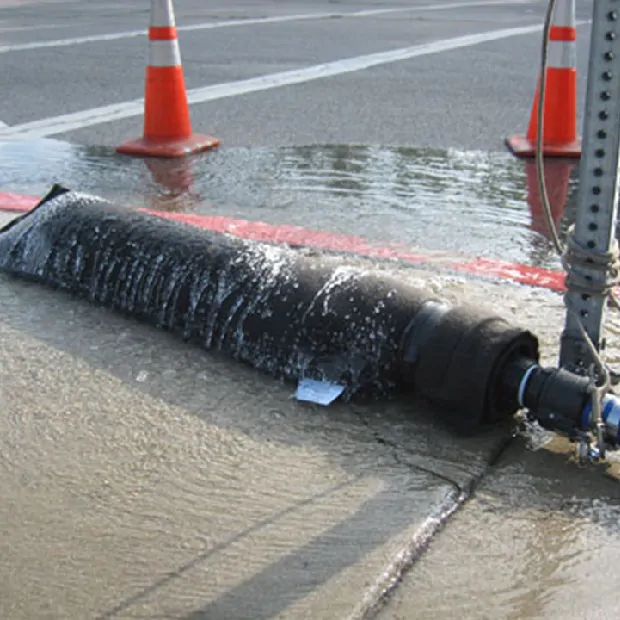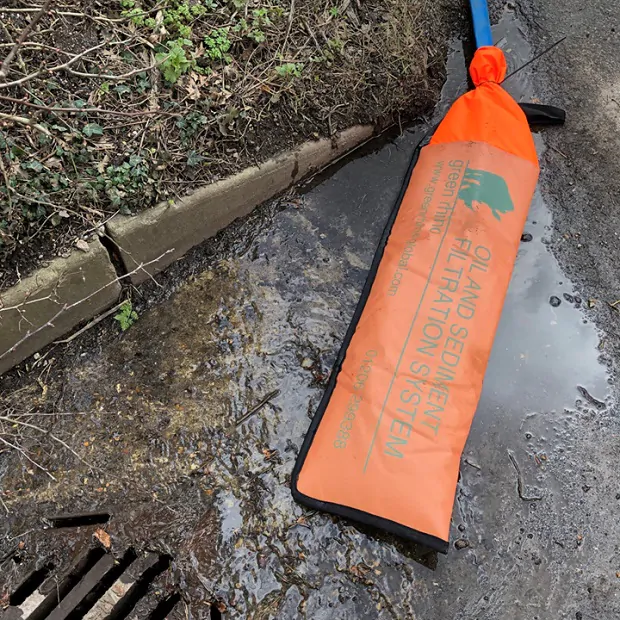What is a drain filter?
A drain filter captures sediment before it can enter the drainage system.
Sediment is a contaminant. It disrupts freshwater and marine ecosystems leading to a reduction in biodiversity. That’s why it is illegal in most cases to discharge silt-laden water directly into the environment.
Surface water drains run straight into natural waterways like rivers or the sea. When it rains, mud is washed from construction sites into the nearest roadside drains. Additionally, you may pump muddy water from excavations straight into the drains on your site.
A build-up of sediment can also block drains leading to localised flooding and expensive clean-up costs.
The Green Rhino EnviroHorn™ Drain Filter is a robust and long-lasting approach popular with leading housebuilders and construction companies. A new drainage system is often installed early in a housebuilding project and muddy site roads can lead to a high volume of silt-laden water so a reliable and reusable solution is highly advantageous.
What are the benefits of a drain filter?
Consider the alternatives. Drain covers and drain mats prevent anything getting into the drain but they just route the muddy water down the road, depositing silt as it goes. This is a skid risk for cyclists and motorists, a slip risk for pedestrians and unsightly for local residents. The water will probably enter a drain further down the road. There are more responsible approaches.
Another approach involves wedging a drain bag inside the gully pot. This allows water to flow through but traps sediment. A common complaint is that the weight of sediment can cause the bag to fall to the bottom of the gully pot rendering it ineffective and making it difficult to remove. These bags tend to be full of polystyrene pellets too. If the bag gets split, this polystyrene may find its way into the environment.
In order to protect drains in a more responsible and effective way, a drain filter is widely considered to be the best approach. The filter is suspended inside the gully pot and captures sediment and debris as run-off passes through. The big advantage of drain filters is that they can be easily emptied and reused if they fill up.
Balfour Beatty has listed EnviroHorn on the Considerate Constructors Best Practice Hub.
How the EnviroHorn Drain Filter works
EnviroHorn can be installed in five minutes. The conical filter is placed inside the gully pot and the large square top, which has full instructions printed on it, is cut to size leaving a 6” collar on all sides of the gully aperture. This collar is usually taped down onto the road using a roll of wide insulation tape. This ensures that all run-off goes through the drain filter and not down the sides. Read the EnviroHorn Installation Tips for more options.
If the EnviroHorn™ fills with silt, simply remove, empty and reuse. Alternatively, the EnviroHorn can be emptied while in situ by simply scooping the sediment out.
The Sediment-only EnviroHorn will retain 21kg of sediment before it needs to be emptied. Make regular inspections to make sure your EnviroHorns do not overfill.
The Oil and Sediment EnviroHorn will hold 19kg of sediment and will soak up a light oil sheen. However, the EnviroHorn should be replaced once this has occurred. If you regularly have oil sheen on your site run-off, a drain filter is not sufficient protection. You should investigate the causes and deal with them at source using other Green Rhino products.

